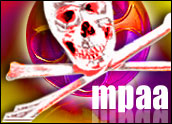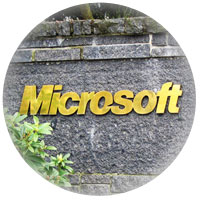
It may be against the law for U.S. consumers to import prescription drugs into the United States, but that isn’t stopping the growth in rogue Internet pharmacies.
In fact, the number of such sites is skyrocketing: The National Center on Addiction and Substance Abuse (CASA) at Columbia University found a total of 581 Web sites advertising or selling controlled prescription drugs in 2007, up 70 percent over the year before.
Part 1 of this three-part series discusses how the government is working to regulate illegal purchases of prescription drugs — some life-threatening counterfeits — from online pharmacies.
Benzodiazepine drugs such as Xanax and Valium are the most frequently offered controlled prescription drugs, sold on 79 percent of the sites, CASA found. Opioids such as Vicodin and OxyContin are next, found on 64 percent of the sites.
A Pharmaceutical Candy Shop
Even more sobering: While 187 sites found by CASA were actually selling controlled prescription drugs this year, only two of them were certified by the National Association of Boards of Pharmacy (NABP). Eighty-four percent, on the other hand, did not require a prescription.
While controlled substances account for just 11 percent of the dosages sold at legitimate brick-and-mortar pharmacies in the United States, they represent 95 percent at rogue Internet pharmacies, according to the Drug Enforcement Administration (DEA).
Not coincidentally, abuse of prescription drugs is growing rapidly in this country. Between 1992 and 2003, it increased by 94 percent in the U.S. population as a whole, Susan Foster, vice president and director for policy research and analysis at CASA, told the E-Commerce Times.
More distressing still is the fact that among children, the problem is getting even worse: The number of 12- to 17-year-old children admitting to such drug abuse jumped by 212 percent over the same period.
Victims of Vicodin
Almost 10 percent of all high-school seniors today have taken Vicodin in the last year — many times the number that have taken heroin or cocaine, added Philip Heymann, professor of law at Harvard University. In fact, Vicodin is now the most widely reported drug abused by high-school seniors, after only tobacco, alcohol and marijuana, he said.
Yet rogue Internet pharmacies have no controls whatsoever preventing the sale of these drugs to children.
“There is a vast network of places where a young person can buy highly addictive narcotics with just a credit card, and they have Google or Yahoo to tell them where to go,” Heymann told the E-Commerce Times.
Efforts to Protect
To certify the credibility of law-abiding pharmacy sites that follow the rules, the NABP developed the Verified Internet Pharmacy Practice Sites (VIPPS) program that serves as the equivalent of a Good Housekeeping Seal of Approval.
In March, meanwhile, Sen. Dianne Feinstein (D-Calif.) and Rep. Jeff Sessions (R-Ala.) introduced the Online Pharmacy Consumer Protection Act of 2007 to toughen consumer protections.
However, in the meantime, the working rule has to be “buyer beware.” More than half of the sites studied in a 2004 Treatment Research Institute report were registered to owners outside the United States, which often seems to mean that anything goes.
The sites do come and go: When CASA tried to track down the rogue sites it had identified in 2004, only 7 percent were still identifiable this year, Foster said. “There is incredible fluidity, and that makes it harder to track,” she said. “A site can go down under one name and come back the next day with a different address.”
‘Confiscation Guarantees’
Besides the obvious “no prescription needed” language that makes it clear what a site’s intentions are, a number of other signs should send up a warning flag to consumers, David Festinger, a senior scientist at TRI, told the E-Commerce Times.
Free trial offers and frequent, e-mailed refill reminders, for example, both suggest the site is out to get users hooked. Assurances of “discreet packaging” and tips on “safe usage” are also tip-offs.
Some sites even go so far as to offer “confiscation guarantees,” Festinger said, offering to replace any goods that get seized in transit. That’s not exactly the kind of reassurance your average, law-abiding consumer is looking for.
Stopping the Flow
Much like the DEA, the FDA works with Customs and Border Patrol as well as international mail facilities to seize illegal drugs coming into the United States, Ilisa Bernstein, director of pharmacy affairs for the Food and Drug Administration (FDA), told the E-Commerce Times. “It’s a huge task, so we take a risk-based approach to identify the drugs of most risk to patients,” she said.
Education is also a big part of the FDA’s efforts to combat prescription drug abuse, including press releases and other tools to publicize information.
The Treatment Research Institute focuses on reaching out to parents through partnerships with organizations such as Partnership for a Drug-Free America, while the American Pharmaceutical Association (APhA) concentrates on working through pharmacists to educate consumers.
“If patients are having trouble affording their medications, we recommend that they talk to their community pharmacists — before taking risks on the Net — to see if the costs can be reduced, because sometimes they can,” Kristina Lunner, senior director of government affairs for the APhA, told the E-Commerce Times.
On the Hot Seat
Others place blame on the third parties that grease the wheels of e-commerce.
“We think the only way to reduce this problem is by enlisting the cooperation of the people who provide the channels for financing these sales — credit card companies and PayPal — and by getting Internet service providers (ISPs) to offer any family the opportunity to remove any site advertising prescription drugs without a prescription from their Internet connection,” Heymann said.
“Right now, credit card companies and ISPs are in the business of selling drugs, and they shouldn’t be,” he added. “They should be cutting off any merchant that’s selling drugs into the United States.”






















































Social Media
See all Social Media